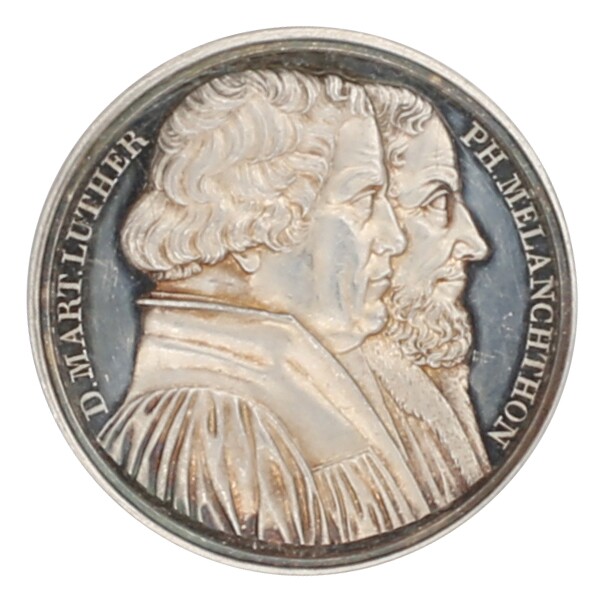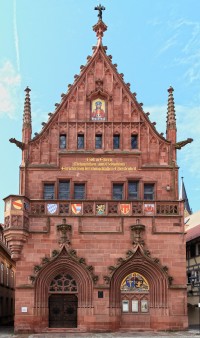Vorderseite: Die Büsten Luthers und Melanchthons nebeneinander nach rechts.
Umschrift: D. MART. LUTHER PH. MELANCHTHON
Rückseite: Ansicht der bischöflichen Pfalz mit dem Burggrafenturm, darüber: BISCHOEFL.PFALZ
Z. AUGSBURG / VOM IAHR 1530.; im Abschnitt: DRITTES IUBELFEST DER / ÜBERGABE DER AUGSBURG / CONFESS. AM 25 IUNIUS / 1830.; darunter Künstlersignatur: NEUSS F.
Martin Luther (1483 – 1546) und Philipp Melanchthon (1497 – 1560)
en

